The Royal Mail of England was established in 1516 by King Henry VIII. This long history created some conventions for addressing envelopes that did not carry over to the United States, which established its mail service in 1775.
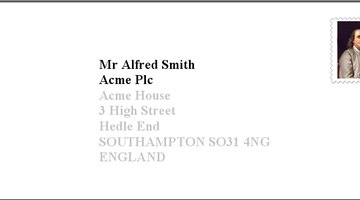
Start with the name of the person and his company on separate lines. These are optional, however, since the Royal Mail does not track people's names and companies. This example uses "Mr. Alfred Smith" for the person's name and "Acme PLC" as the company name. PLC stands for Public Limited Company.
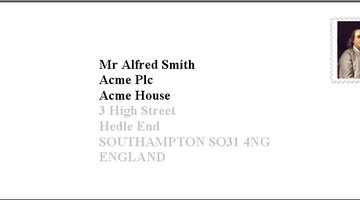
On the next line, the building name is required unless there is a street address. Some locations only have a building name and not a street address. Although the Royal Mail tracks these names, they do not name buildings. That is the responsibility of the local highways or engineers department. This example uses "Acme House" as the building name.
- The Royal Mail of England was established in 1516 by King Henry VIII.
- On the next line, the building name is required unless there is a street address.
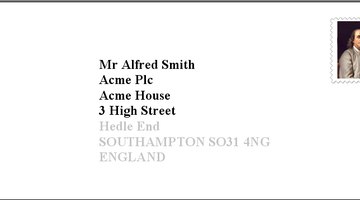
If present, the number and street name is required on the next line. For addresses with both a building name and an address, the building name is optional. This example uses "3 High Street" as the street address.
- If present, the number and street name is required on the next line.
- This example uses "3 High Street" as the street address.
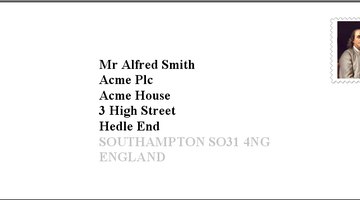
On the next line, the locality name is required only to distinguish a similar road name in the same area. This example uses "Hedle End" as the locality name.
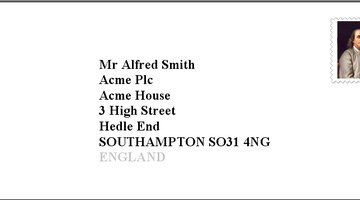
The next line requires the town or city and postcode in capital letters. English convention is to put the postcode on the final line. However, since the envelope is coming from the United States, the convention is to include the code on the same line as the city name, capitalised. This example uses "SOUTHAMPTON SO31 4NG."
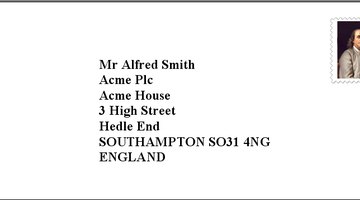
The final line requires the name of the country, capitalised for consistency, in this case, "ENGLAND."
TIP
English return addresses are typically placed on the flap on the back of the envelope.
